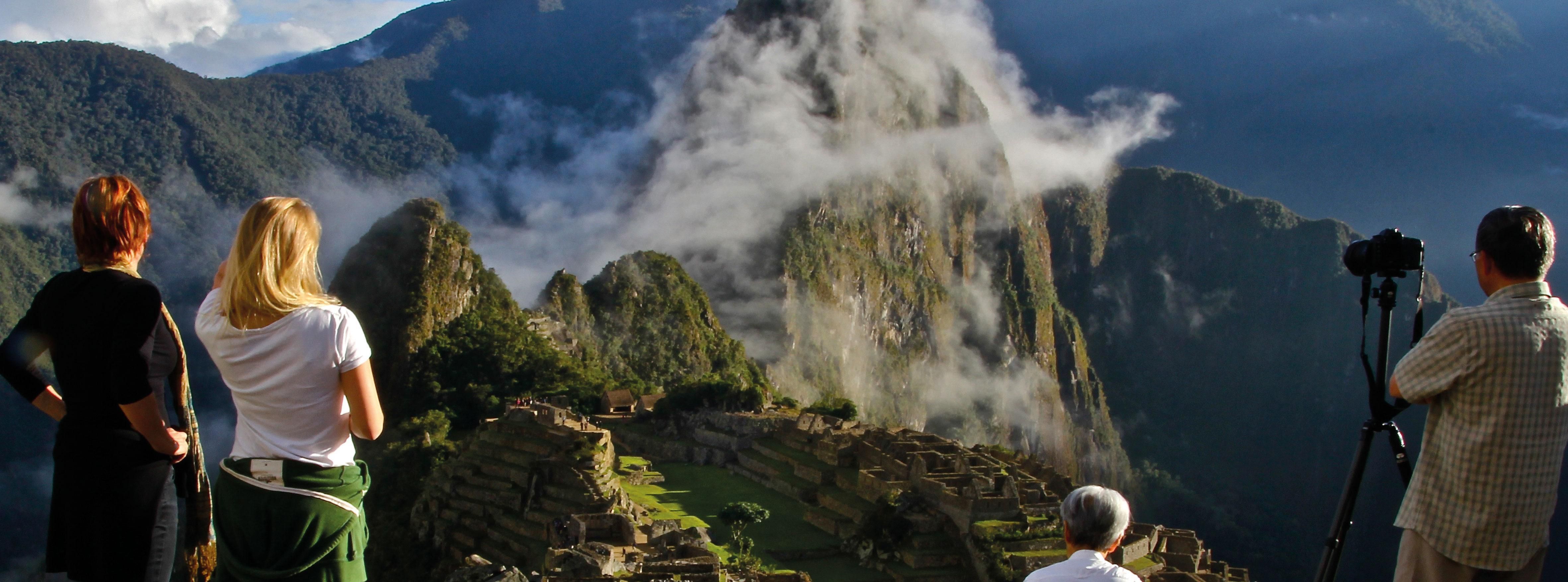Travel highlights Peru

Machu Picchu
Machu Picchu is an archaeologists dream. The ruins of Machu Picchu, rediscovered in 1911 by Yale archaeologist Hiram Bingham, are one of the most beautiful and enigmatic ancient sites in the world. You can explore fantastically-built palaces, temples and courtyards, as well as the flourishing neighbouring hillside. While the Inca people certainly used the Andean mountain top, erecting many hundreds of stone structures from the early 1400's, legends and myths indicate that Machu Picchu (meaning 'Old Peak' in the Quechua language) was revered as a sacred place from a far earlier time. Whatever its origins, the Inca turned the site into a small (5 square miles) but extraordinary city. Invisible from below and completely self-contained, surrounded by agricultural terraces sufficient to feed the population, and watered by natural springs, Machu Picchu seems to have been utilized by the Inca as a secret ceremonial city.
Arequipa
Arequipa, known as the White City for its beautiful white-stone buildings lies at the feet of the grand volcanos of various mountains. The downtown of the city, placed on the World Cultural Heritage list by UNESCO, features baroque churches and mansions from the colonial period. It is also closely located to one of the largest canyons in the world for some outdoor adventure.
Cusco
Once the center of the Incan Empire, Cusco now draws tourists from around the world. There are Incan buildings waiting for you to discover them among its cobble-stoned streets. You will find buildings like the Koricancha and the palace of Inca Roca, as well as Andean Baroque structures from the Colonial Period like the Cathedral and the Church of the Company of Christ. You can visit the picturesque neighbourhood of San Blas where the best artisans in the department have set up their workshops. This magical city also has an exciting nightlife with cafes, restaurants, and bars for all tastes. Just ten minutes away from the city, there are the massive walls of the Sacsayhuamán fortress, and a few kilometers from there, you find the archeological sites of Qenko, Pukapukara, and Tambomachay, Incan buildings constructed completely with stone.
Nazca
Among the valleys on the southern coast of Peru rests enigmatic Nazca, the region's largest existing town and a tourist destination filled with mystery and historical interest. The famous Nazca Lines, a World Heritage Site, are located here, an ancient archeological wonder with unknown origins. Nazca itself is a place where travellers can experience indigenous culture while also having access to many comfortable hotels and restaurants.
Puerto Maldonado
As the least populated area of Peru, Puerto Maldonado sits beyond the jungle on the Madre de Dios river. Puerto Maldonado was founded July 10, 1902, the city was named after explorer Faustino Maldonado, who paddled up the Madre de Dios River to the point where it comes together with the Tambopata River. Puerto Maldonado is the gateway to three national parks in the Peruvian Amazon featuring an extraordinary diversity of wild species of flora and fauna: Tambopata - Candamo, Bahuaja -Sonene and Pampas del Heath.
Puno
Home to both Lake Titicaca and ancient Incan ruins, Puno is a delight to explore. The massive hills offer panoramic views of the city and the surrounding areas. Great cultural traditions have stood the test of time, and below the hills, visitors can find reed islands where Uro Indians still build handcrafts.